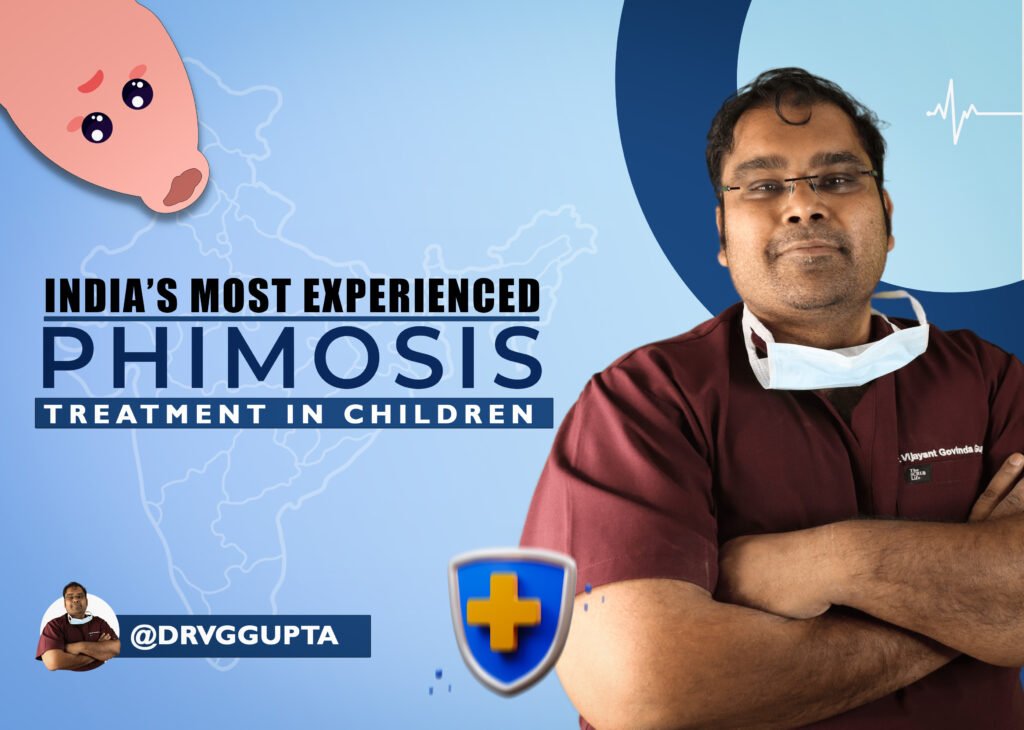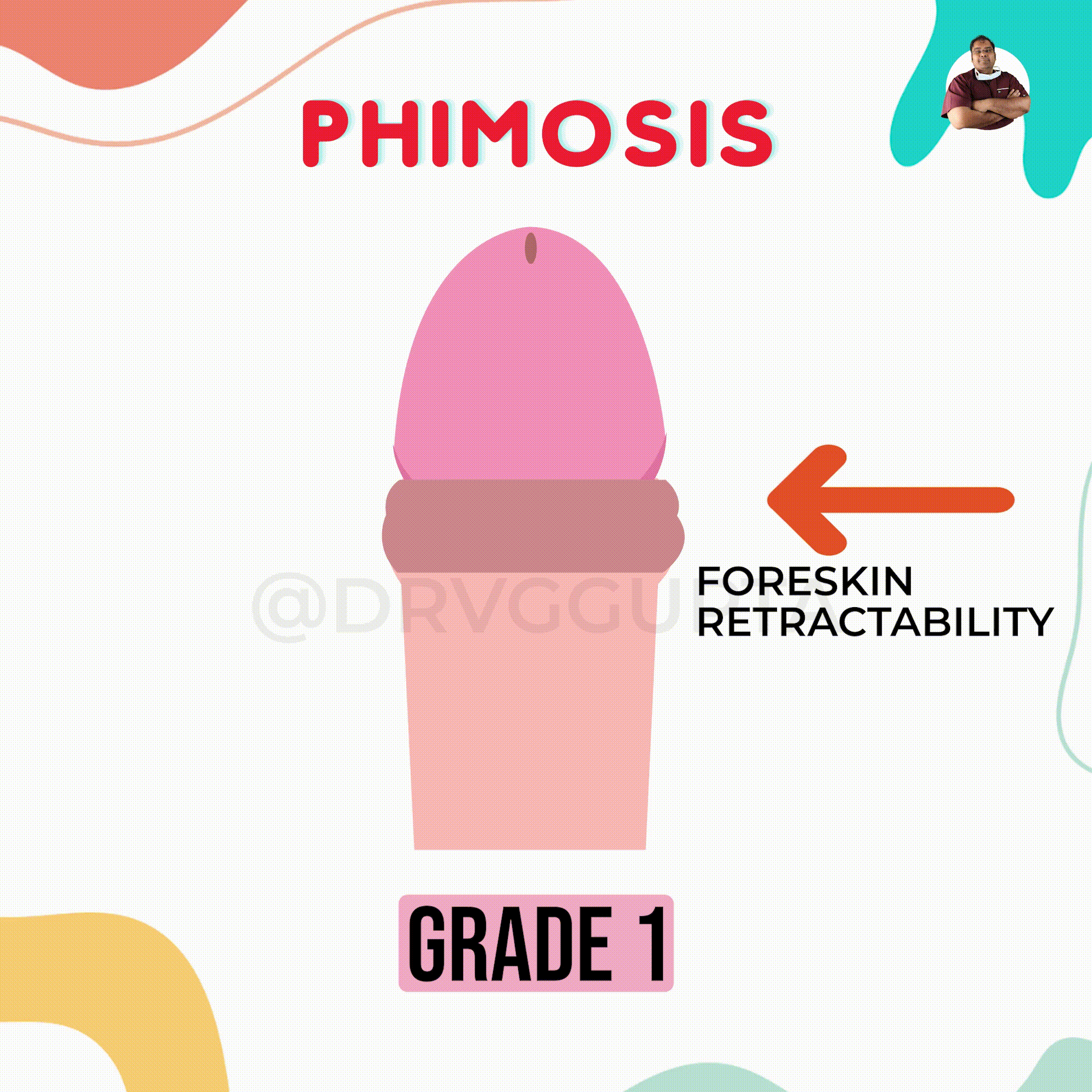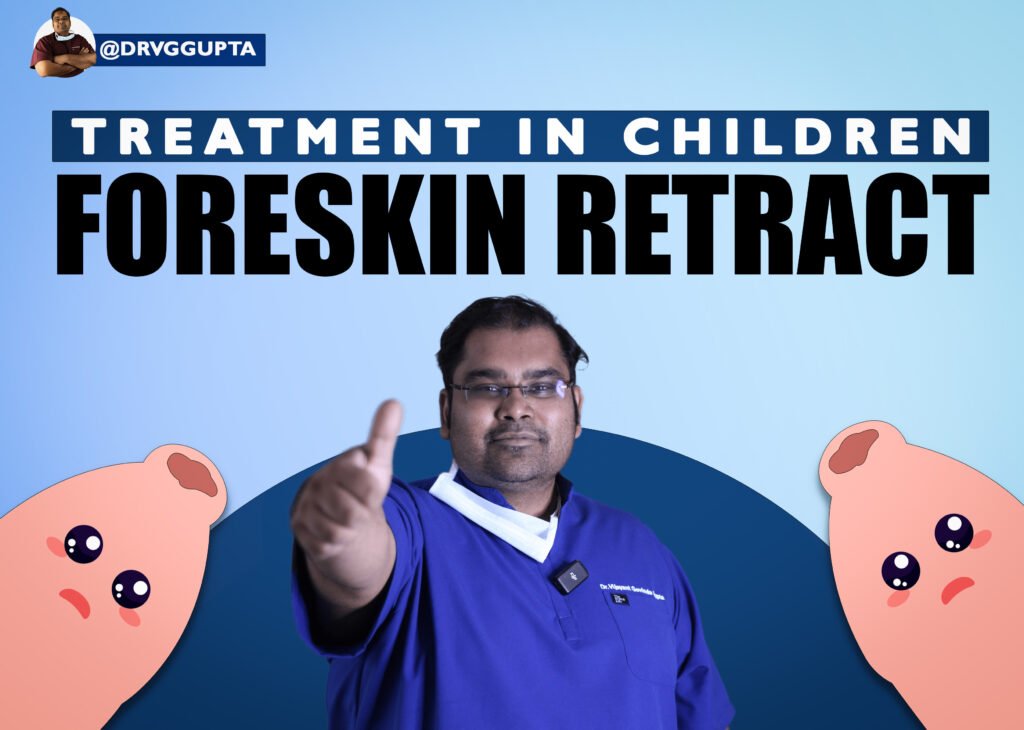
Phimosis Treatment In Children

Phimosis treatment in children is a vital concern for parents seeking solutions for their child’s urological health. Phimosis in boys, where the foreskin cannot be retracted over the glans (head) of the penis, is common in young children and often resolves naturally. However, when medical intervention is required, understanding options like phimosis treatment for boys, non-surgical phimosis remedies for children, circumcision for boys, or pediatric phimosis management is crucial. This article provides a detailed overview of phimosis in children, its causes, symptoms, diagnosis, and treatment options, tailored for parents seeking expert guidance.

What is Phimosis in Children?
Phimosis in children refers to a condition where the foreskin is too tight to be pulled back over the glans. It is categorized into two types:
Physiological Phimosis in Boys: A natural condition in infants and young boys where the foreskin adheres to the glans. This type of phimosis in boys typically resolves without treatment by adolescence.
Pathological Phimosis in Children: Caused by scarring, infection, or inflammation, this type may require medical or surgical interventions like circumcision for boys or non-surgical phimosis treatment for children.
Prevalence of Phimosis in Boys
Nearly 100% of newborns have physiological phimosis.
By age 3, approximately 90% of boys can partially retract their foreskin.
By age 16–17, only about 1% of boys have persistent phimosis in boys requiring phimosis treatment for boys.
Causes of Phimosis in Children
The prepuce or foreskin is a skin covering over the penis. Ideally, it will not cause any problems and is normal in boys. This foreskin usually retracts completely by age 3 years in most children. This happens automatically and does not cause any problems in children. Sometimes the foreskin may cause some problems in young boys.
It may cause the following problems in children boys
- Pain – Child may suffer from pain, burning, irritation to penis if penis is not cleaned
- White discharge – Some whitish materials or hard material like keratin pearls may collect under the skin
- Difficulty in passing urine – if the hole is closed very tight the child may face burning or difficulty in passing urine
- Infection and UTI – Child may develop recurrent infections of kidney and urinary tract
- Parental concern – Mothers or family may be alarmed by the closed foreskin
Symptoms of Phimosis in Boys
Parents seeking phimosis treatment for boys should monitor for these symptoms, particularly in pathological cases:
Inability to retract the foreskin fully or partially.
Pain or discomfort during urination.
Ballooning of the foreskin during urination, indicating obstruction.
Recurrent urinary tract infections (UTIs).
Redness, swelling, or discharge around the foreskin.
White, hardened patches (suggestive of lichen sclerosus).
Physiological phimosis in children is typically asymptomatic unless hygiene issues or infections arise.

Diagnosing Phimosis in Children
Accurate diagnosis is critical for determining the best phimosis treatment for boys. Dr. Vijayant Govinda Gupta follows a structured approach:
Medical History: Inquiries about symptoms, hygiene practices, and history of infections or trauma.
Physical Examination: Assessing the foreskin’s retractability and checking for scarring or inflammation.
Tests (if needed):
Urine Analysis: To detect infections.
Swab Tests: To identify bacterial or fungal causes.
Biopsy (rare): To confirm lichen sclerosus in severe cases of pathological phimosis in children.
Note: Forcing the foreskin to retract during examination can cause pain and complications and should be avoided.
Phimosis Treatment Options for Boys
Treatment for phimosis in children depends on the type, severity, and age of the child. Dr. Gupta prioritizes non-surgical phimosis remedies for children when possible, reserving surgical options like circumcision for boys for severe cases.

1. Non-Surgical Phimosis Treatment for Boys
Observation and Hygiene:
For physiological phimosis in boys, no intervention is often needed, as it resolves naturally.
Parents should practice gentle cleaning of the external genital area with mild soap and water.
Avoid forceful retraction to prevent trauma.
Regular follow-ups with a pediatric urologist ensure proper monitoring of phimosis in children.
Topical Steroid Creams:
Indication: Mild to moderate phimosis in boys (physiological or early pathological).
Medications: Betamethasone 0.05% or hydrocortisone 1% cream, applied twice daily for 4–8 weeks.
Mechanism: Steroids reduce adhesions and improve foreskin elasticity.
Success Rate: Effective in 70–90% of cases for non-surgical phimosis treatment for children.
Instructions:
Apply a thin layer to the tight foreskin area.
Perform gentle stretching (without force) after applying the cream.
Follow the urologist’s guidance to avoid overuse.
Antibiotics or Antifungals:
Used to treat infections like balanitis, which may contribute to pathological phimosis in children.
Prescribed as oral or topical medications based on the infection type.
2. Surgical Treatments for Phimosis in Children
When non-surgical phimosis remedies for children fail or in severe cases of pathological phimosis in children, surgical options are considered:
Circumcision for Boys:
Description: Complete removal of the foreskin.
Indications:
Severe pathological phimosis in children with scarring (e.g., lichen sclerosus).
Recurrent infections or UTIs.
Significant urinary obstruction.
Procedure:
Performed under general anesthesia in children.
A daycare procedure with a recovery period of 7–10 days.
Risks: Minimal but include bleeding, infection, or rare complications like meatal stenosis.
Considerations: Cultural, religious, or personal preferences are discussed with parents to ensure informed decisions about circumcision for boys.
Preputioplasty:
Description: A minimally invasive procedure involving small incisions to widen the foreskin, preserving it.
Indications: Cases where circumcision for boys is not preferred, and the foreskin is healthy.
Advantages: Preserves the foreskin’s protective and sensory functions.
Recovery: Faster than circumcision, with fewer complications.
3. Managing Complications of Phimosis in Boys
Paraphimosis: A medical emergency where the retracted foreskin becomes stuck, causing swelling.
Treatment: Manual reduction under local anesthesia or, in severe cases, surgical intervention.
Recurrent Infections: Treated with antibiotics and improved hygiene practices.
Lichen Sclerosus: May require steroids and, in many cases, circumcision for boys as a definitive treatment.
Video on Phimosis in Children's
Myths About Phimosis Treatment in Children
Myth: All cases of phimosis in boys require circumcision for boys.
Fact: Many resolve naturally or with non-surgical phimosis remedies for children.
Myth: Forcing the foreskin back is safe and effective.
Fact: Forced retraction can cause trauma and worsen phimosis in children.
Myth: Phimosis always leads to serious complications.
Fact: Physiological phimosis in boys is usually benign and resolves without intervention.
Download Brochure

Phimosis in children is often a normal developmental phase, but pathological phimosis in boys requires timely intervention. Options like non-surgical phimosis remedies for children, circumcision for boys, or preputioplasty offer effective solutions tailored to the child’s condition. Dr. Vijayant Govinda Gupta prioritizes conservative approaches for pediatric phimosis management when possible, ensuring personalized care. Parents can support their child’s health by maintaining proper hygiene, monitoring symptoms, and seeking expert guidance for phimosis treatment in children.

